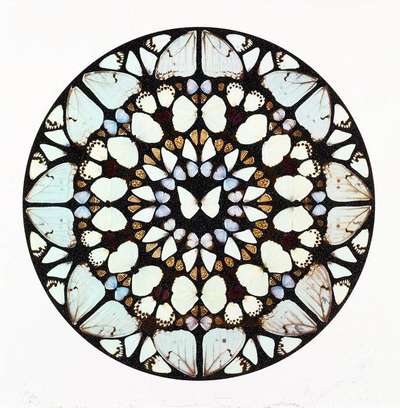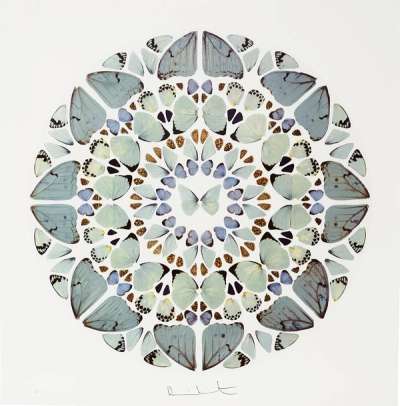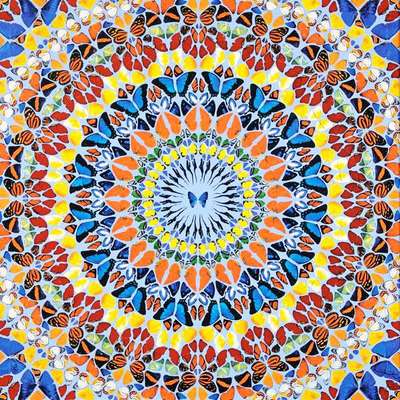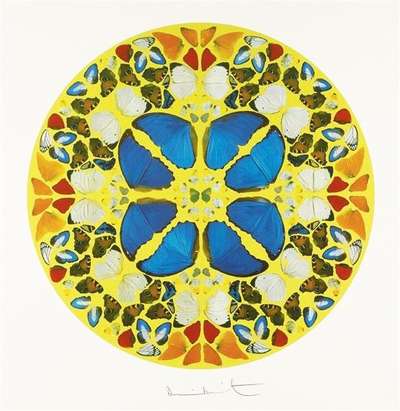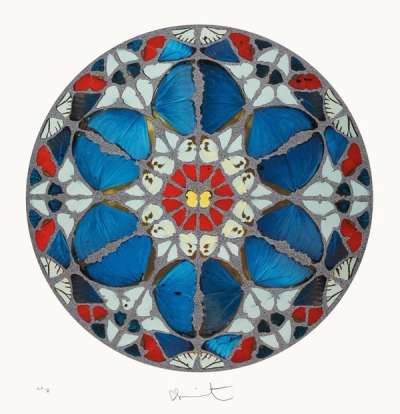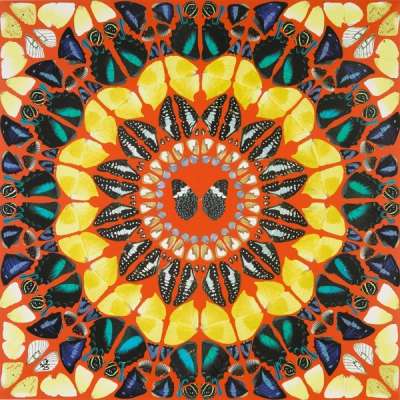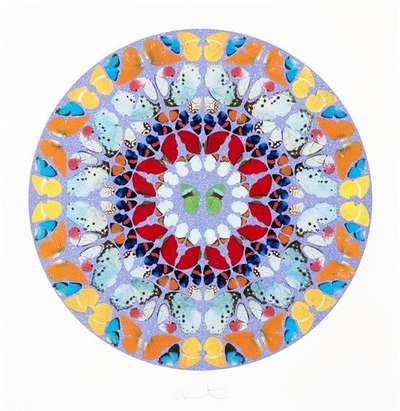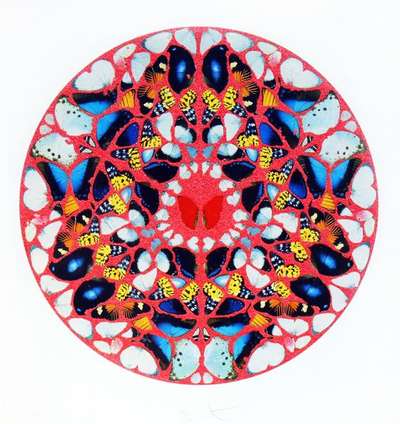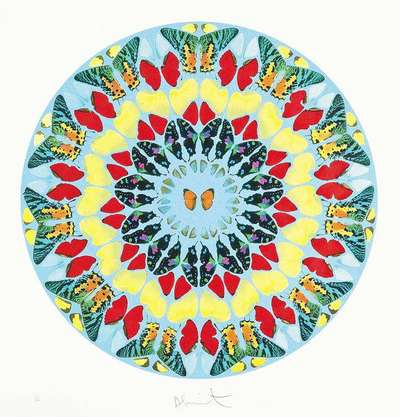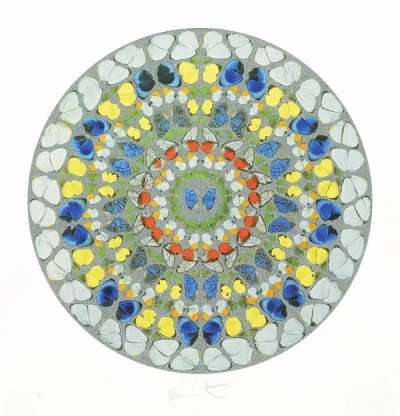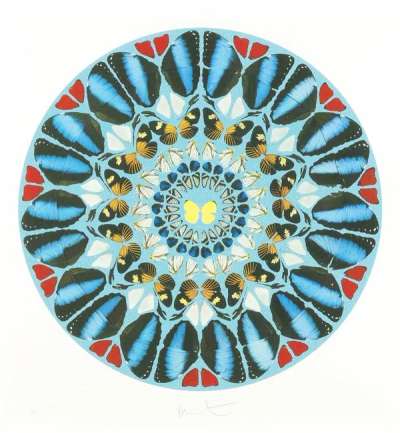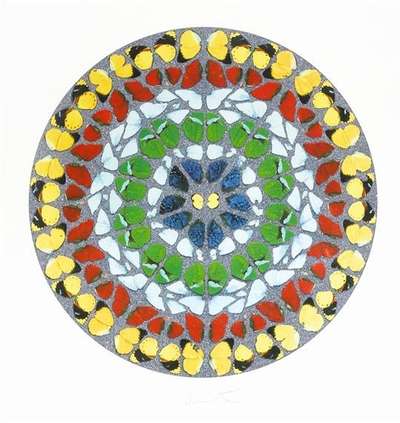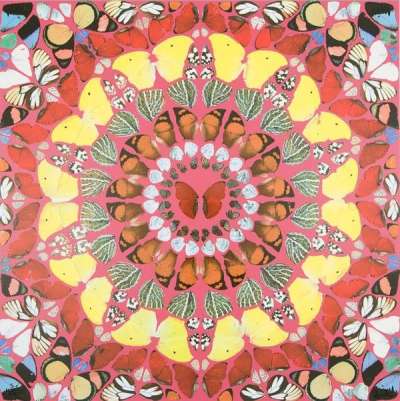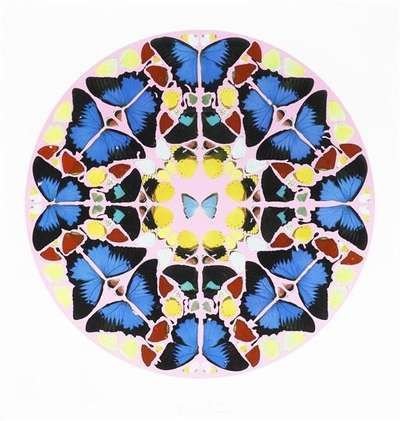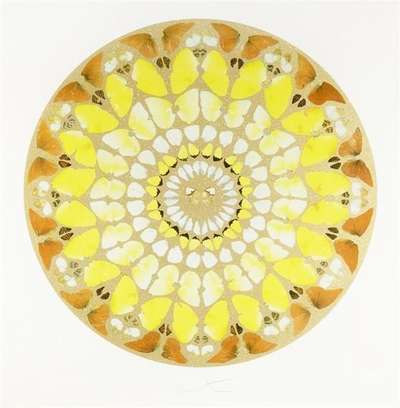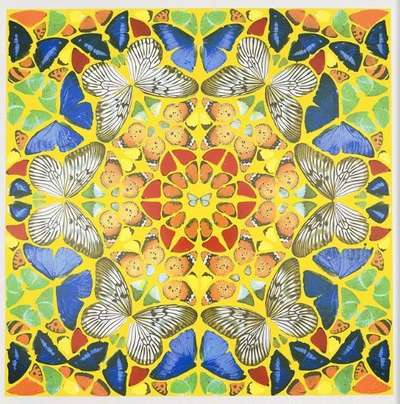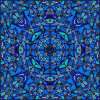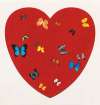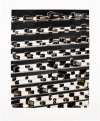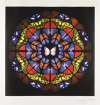Psalms
The 150 prints in Damien Hirst's Psalms feature butterfly wings arranged into intricate mandala patterns. Naming the prints after individual Old Testament psalms, Hirst pursues his interest in contemporary belief systems. Though, anecdotally, the patterns were inspired by a Victorian tea tray, their precise geometry perfectly befits the series' meditative theme.
Damien Hirst Psalms For sale
Psalms Value (5 Years)
With £85877 in the past 12 months, Damien Hirst's Psalms series is one of the most actively traded in the market. Prices have varied significantly – from £2331 to £33976 – driven by fluctuations in factors like condition, provenance, and market timing. Over the past 12 months, the average selling price was £9541, with an average annual growth rate of 0.77% across the series.
Psalms Market value
Auction Results
| Artwork | Auction Date | Auction House | Return to Seller | Hammer Price | Buyer Paid |
|---|---|---|---|---|---|
 Coeli Enarrant Damien Hirst Signed Print | 19 Mar 2025 | Forum Auctions London | £8,075 | £9,500 | £12,000 |
 Exaudiat Te Dominus (diamond dust) Damien Hirst Signed Print | 23 Jan 2025 | Phillips London | £6,375 | £7,500 | £10,000 |
 Exaudi Domine (diamond dust) Damien Hirst Signed Print | 12 Dec 2024 | Phillips Hong Kong | £5,950 | £7,000 | £9,500 |
 Kindness Damien Hirst Signed Print | 30 Nov 2024 | Neww Auction | £5,950 | £7,000 | £8,000 |
 Miserere Mei Deus Damien Hirst Signed Print | 7 Jun 2024 | Phillips London | £2,975 | £3,500 | £4,850 |
 Quare Fremuerunt Gentes (diamond dust) Damien Hirst Signed Print | 3 Oct 2023 | Bonhams Los Angeles | £7,225 | £8,500 | £10,500 |
 Benedictus Dominus (diamond dust) Damien Hirst Signed Print | 21 Sept 2023 | Phillips London | £11,050 | £13,000 | £18,000 |
 Domini Est Terra Damien Hirst Signed Print | 15 Mar 2023 | Christie's London | £4,675 | £5,500 | £7,500 |
Sell Your Art
with Us
with Us
Join Our Network of Collectors. Buy, Sell and Track Demand
Meaning & Analysis
Composed of 150 prints, Damien Hirst’s Psalms reference the artist’s ongoing fascination with spirituality, and cyclical notions of life and death. The series is composed of 150 works, all of which are made using butterfly wings on painted canvases. As indicated by the title of the series, each print in the series is named after a psalm from the Old Testament. The Psalms series captures the artist’s fascination with contemporary belief systems, such as religion, as well as questions of spirituality, life and death. The Psalms are part of a broader collection, the Kaleidoscope painting, an ambitious project begun by the artist in 2001, which was inspired by the intricate pattern of butterfly wings Hirst saw on an old Victoria tea tray.
In the Psalms series, every print depicts mesmerising and spectacular patterns of concentric circles which are composed of butterflies. From afar, the viewer thinks the circles are just made up of various different coloured shapes, however when looked at closely, the details of the butterflies and their wings become apparent. The prints in this series demand the viewer pays close attention to the intricate detail within the works, acknowledging and appreciating the hundreds of butterflies that compose the prints. The series is impressive due to the meticulous patterns Hirst creates and the fact that no two patterns are alike. The prints are full of variety, making it a dynamic and exciting body of works.
Throughout the series, Hirst uses bold and vibrant butterflies to make magnificent patterns.
The butterfly has become a signature part of Hirst’s visual language and iconography, and is one of the artist’s most well-known motifs, alongside skulls and diamonds. The artist began using butterflies in his work as early as 1989, while he was studying Fine Art at Goldsmiths College in London, and has continued to incorporate the beautiful insect into his works in series such as The Souls series from 2010. Hirst’s most iconic use of butterflies was arguably in 1991, when the artist produced an installation in which butterflies emerge from pupae attached to white painted canvases kept in a humid exhibition room.
